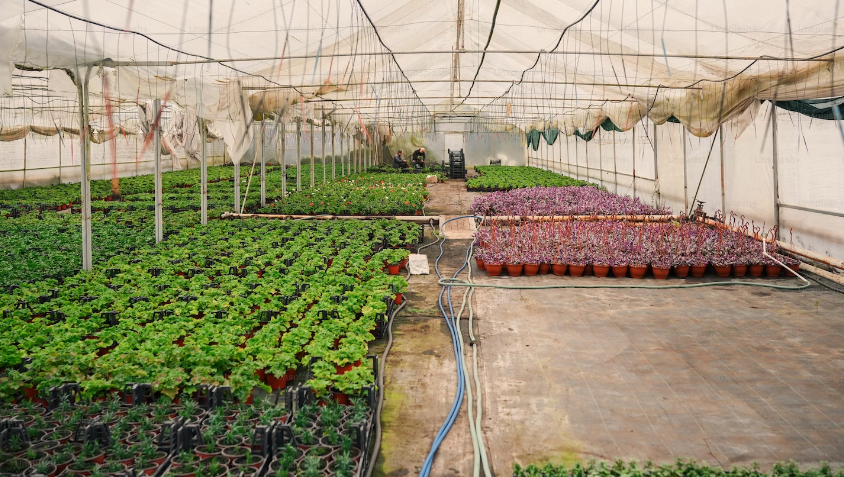Installing a drip irrigation system at home is an effective and efficient way of slow-watering plants. It was invented by Simcha Blass and his son Yeshayahu on November 27, 1897 – July 18, 1982.
The drip irrigation system was created specifically to save plants from being overwatered. Overwatering or excessive watering reduces oxygen levels in soil which destroys a plant’s fine roots and causes it to die.
Benefits of Installing a drip irrigation system at Home: The Insights
Conservation of Water: The drip irrigation system effectively helps conserve water by dripping water droplets directly to the plant’s roots, unlike the traditional way of jet spraying.
Drip irrigation systems help you reduce the waste of water by at least 50% which may allow you to save up to 25$.
Improved Plant Health: The emitters of the drip irrigation system help control the moisture level and nutrient needs of a plant. A slow water dripping system allows the soil to maintain its oxygen level and supplies efficient water to the plant roots.
In assistance, slow watering plants helps plants grow, preventing the overgrowth of unnecessary weeds. It prevents diseases by reducing water contact with the leaves and fruits of the plants.
Saving Time and Labor: Compared to other watering techniques like sprinklers, soaker hoses, and handheld hoses, drip irrigation systems have many advantages. It helps a lot in time and labor savings as you don’t need to manually water your plants.
The automated timer system also is a big advantage for one to sit relaxed while it knows when to water the plants.
Thus you should have the drip irrigation system installed at your home and enjoy your holidays or stay relaxed at your workplace.
Now you know the best assistance of Irrigation Systems in watering plants in your garden in an effective way.
Let’s learn 03 easy steps for installing a drip irrigation system at home.

-
Planning Your Drip Irrigation System at Home: DIY
Assessing your garden: Examine your landscape or garden in detail. Determine the plant’s species, location, and any special watering requirements.
Determining water source and pressure: Locate your water supply and check the water pressure. For making the best component choices and guaranteeing the best system performance, this knowledge is important.
Choosing the perfect components: drip irrigation systems require tubing, emitters, filters, and some other parts. Carefully select the parts that best fit the needs of your garden.
Water flow and system design calculations: You need to calculate the water flow rate and design the required system layout. This step is essential to ensure an efficient water supply.
-
Required Materials and Tools
There are some Materials and Tools you need to manage setting up an Irrigation System at home. The below checklist may assist you best in ensuring the perfect required Materials and Tools.
Materials
- Drip tubing
- Pressure regulators
- Controller or timer
- Emitters for drip stakes
- Filters
- Stakes or holders
- Connectors and fittings
Tools
- Shovel
- Hole punch
- Scissors or pruning shears
- Teflon tape (for threaded connections)
- Pipe cutter or scissors for tubing

-
Installation process of the Irrigation System
Step-by-step mainline setup instructions: The mainline tubing should first be laid down along the designated routes. Use stakes or holders to secure it. Ascertain that the mainline has a filter and a pressure regulator, is attached to the water supply, and is working properly.
Placing emitters and tubing for different plant types: The base of each plant should have emitters or tubing installed nearby. The flow rate of the emitter should be adjusted based on the various plants’ water requirements.
Installing filters and pressure regulators: Filters keep the system from becoming jammed with trash, while pressure regulators guarantee constant water pressure. To increase the lifespan of your drip irrigation system, install these parts.
Installing a controller: Install a controller or timer for automation. Create watering schedules depending on the needs of your garden and the climate in your area.
Checking for leaks and troubleshooting: Switch on the machine, then carefully check for leaks or other problems. Any issues should be resolved right away to avoid wasting water and over-watering the plants.
Maintaining Your drip irrigation system at Home
There are some maintenance tasks to be done to keep the drip irrigation system in top working and mint condition:
- Complete regular checks and adjust emitters and tubing as needed.
- To avoid obstructions, clean filters and emitters frequently.
- Winterize the system before it becomes cold to prevent any damage.
Useful Tips for Efficient Watering
- Here are some useful tips to make the best use of your drip irrigation system at home:
- Depending on the needs of the plant and the weather, determine the right watering cycles and intervals.
- Adapt the system so that it provides the right amount of water for each variety of plant.
- Watch your garden carefully for indications of over- or under-watering.
Installing a drip irrigation system at home is much easier for you to do it yourself at home. Your home gardening experience can be greatly improved by using a drip irrigation system.
For any garden Interested it’s an excellent investment because it helps to conserve water and improves plant health while also saving time.
You can enjoy an established garden while using the least amount of water and labor by following this simple tutorial and using the suggested ideas. The enchantment of drip irrigation will work its magic on your garden if you get started right away.




